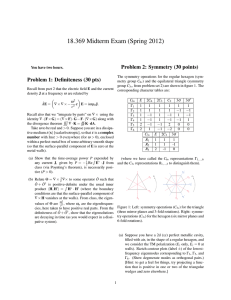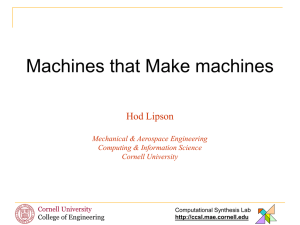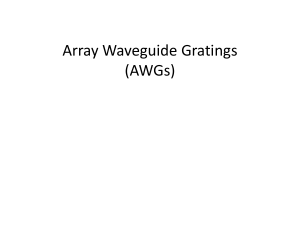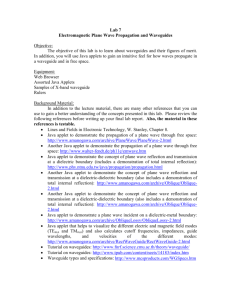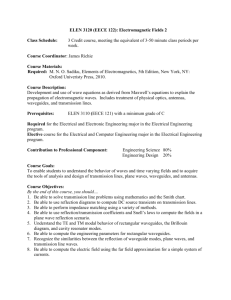Tools to guide and switch light, developed at Cornell,
advertisement
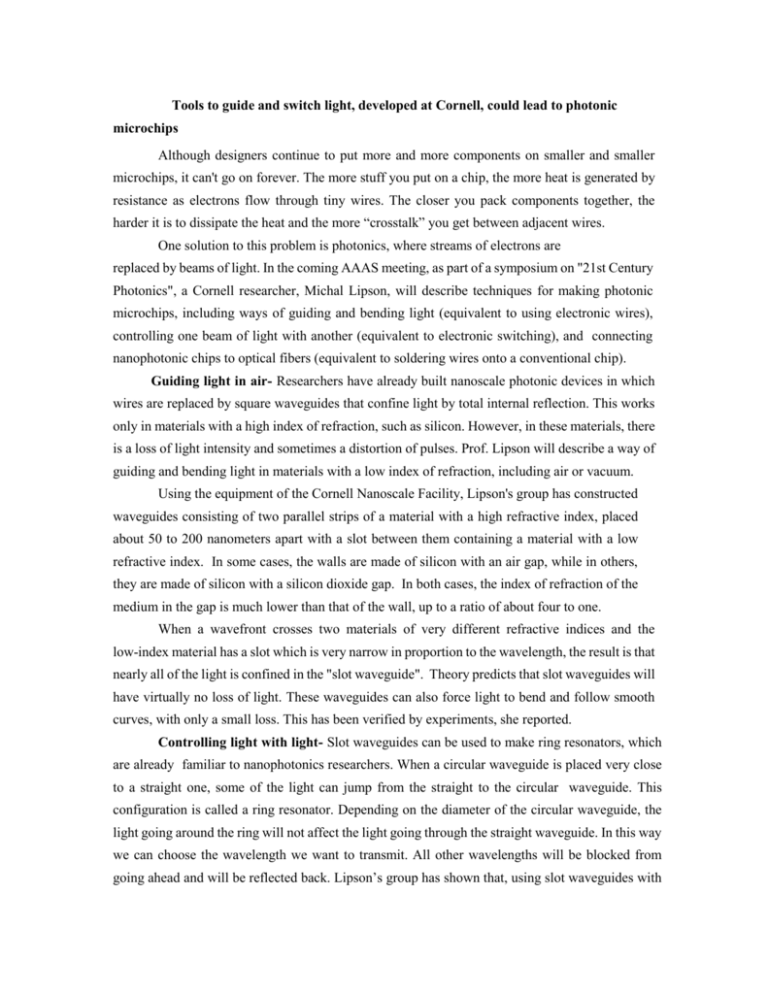
Tools to guide and switch light, developed at Cornell, could lead to photonic microchips Although designers continue to put more and more components on smaller and smaller microchips, it can't go on forever. The more stuff you put on a chip, the more heat is generated by resistance as electrons flow through tiny wires. The closer you pack components together, the harder it is to dissipate the heat and the more “crosstalk” you get between adjacent wires. One solution to this problem is photonics, where streams of electrons are replaced by beams of light. In the coming AAAS meeting, as part of a symposium on "21st Century Photonics", a Cornell researcher, Michal Lipson, will describe techniques for making photonic microchips, including ways of guiding and bending light (equivalent to using electronic wires), controlling one beam of light with another (equivalent to electronic switching), and connecting nanophotonic chips to optical fibers (equivalent to soldering wires onto a conventional chip). Guiding light in air- Researchers have already built nanoscale photonic devices in which wires are replaced by square waveguides that confine light by total internal reflection. This works only in materials with a high index of refraction, such as silicon. However, in these materials, there is a loss of light intensity and sometimes a distortion of pulses. Prof. Lipson will describe a way of guiding and bending light in materials with a low index of refraction, including air or vacuum. Using the equipment of the Cornell Nanoscale Facility, Lipson's group has constructed waveguides consisting of two parallel strips of a material with a high refractive index, placed about 50 to 200 nanometers apart with a slot between them containing a material with a low refractive index. In some cases, the walls are made of silicon with an air gap, while in others, they are made of silicon with a silicon dioxide gap. In both cases, the index of refraction of the medium in the gap is much lower than that of the wall, up to a ratio of about four to one. When a wavefront crosses two materials of very different refractive indices and the low-index material has a slot which is very narrow in proportion to the wavelength, the result is that nearly all of the light is confined in the "slot waveguide". Theory predicts that slot waveguides will have virtually no loss of light. These waveguides can also force light to bend and follow smooth curves, with only a small loss. This has been verified by experiments, she reported. Controlling light with light- Slot waveguides can be used to make ring resonators, which are already familiar to nanophotonics researchers. When a circular waveguide is placed very close to a straight one, some of the light can jump from the straight to the circular waveguide. This configuration is called a ring resonator. Depending on the diameter of the circular waveguide, the light going around the ring will not affect the light going through the straight waveguide. In this way we can choose the wavelength we want to transmit. All other wavelengths will be blocked from going ahead and will be reflected back. Lipson’s group has shown that, using slot waveguides with an air gap, light can travel in the resonator with a much faster velocity (approaching the speed of light in a vacuum) than it could if the waveguide were made up of a high index of refraction material without an air gap. In fiber-optic communications, signals often have light with several different wavelengths traveling together. Each wavelength in the fiber carries a different signal. Ring resonators can be used as filters to separate these signals. Lipson suggested that the first applications of nanophotonic ring resonator circuits might be routers and repeaters for fiber-optic systems. Such technology, she added, could speed up the day when fiber lines directly to the home become practical. The big challenge is to use one beam of light to control another, switching it on and off or modulating it (i.e., varying its intensity). Like the transistor switches in conventional electronic chips, light-beam switches could be the basic components of photonic computers. Switching light - Lipson's group has also made switches in which light is passed in a straight line through a cavity with reflectors at each end, causing the light to bounce back and forth many times before passing through. In this case, the refractive index of the cavity is varied by applying a small electric field. The method works because the light remains in the cavity long enough to be affected by the field. Pumping light into a needle - When photonic microchips are put into use, connecting them to optical fibers can be a challenge because the typical fiber is vastly larger than the waveguide. Imagine trying to pump water from a garden hose into the tip of a hypodermic needle. Most approaches to this problem have used tapered waveguides, but the tapers typically haveto very long and introduce losses. Lipson has found that the best answer is a sort of needle. When the slot waveguide is narrowed almost to a point, like a needle, she said, the waveform is deformed as if it were passing through a lens. Light passing out of the waveguide is spread out to match the larger fiber and, conversely, the "lens" collects light from the fiber and focuses it into the waveguide. In an analogy to connecting wires to conventional microchips, Lipson calls this coupling device "optical solder". She reported that in experiments at Cornell, the device has coupled 200 nanometer waveguides to 5-micron fibers with 95% efficiency. It can also be used to couple waveguides of different dimensions, she added. The method of coupling nano-waveguides to optical fibers is described in a paper, "Nano-taper for Compact Mode Conversion", published in Optics Letters, August 2003. Slot waveguides are described in "Guiding and Confining Light in Void Nanostructures", to be published in Optics Letters. EDITORS: Please note that professor Lipson's first name is pronounced Mee-CHAL, with the same soft ch sound as in Channukah. Related World Wide Web sites: The following sites provide additional information on this news release. Some might not be part of the Cornell University community, and Cornell has no control over their content or availability. The Cornell nanophotonics group: <http://nanophotonics.ece.cornell.edu/>. -30TITLE: ABSTRACT: KEYWORDS: CAT:

